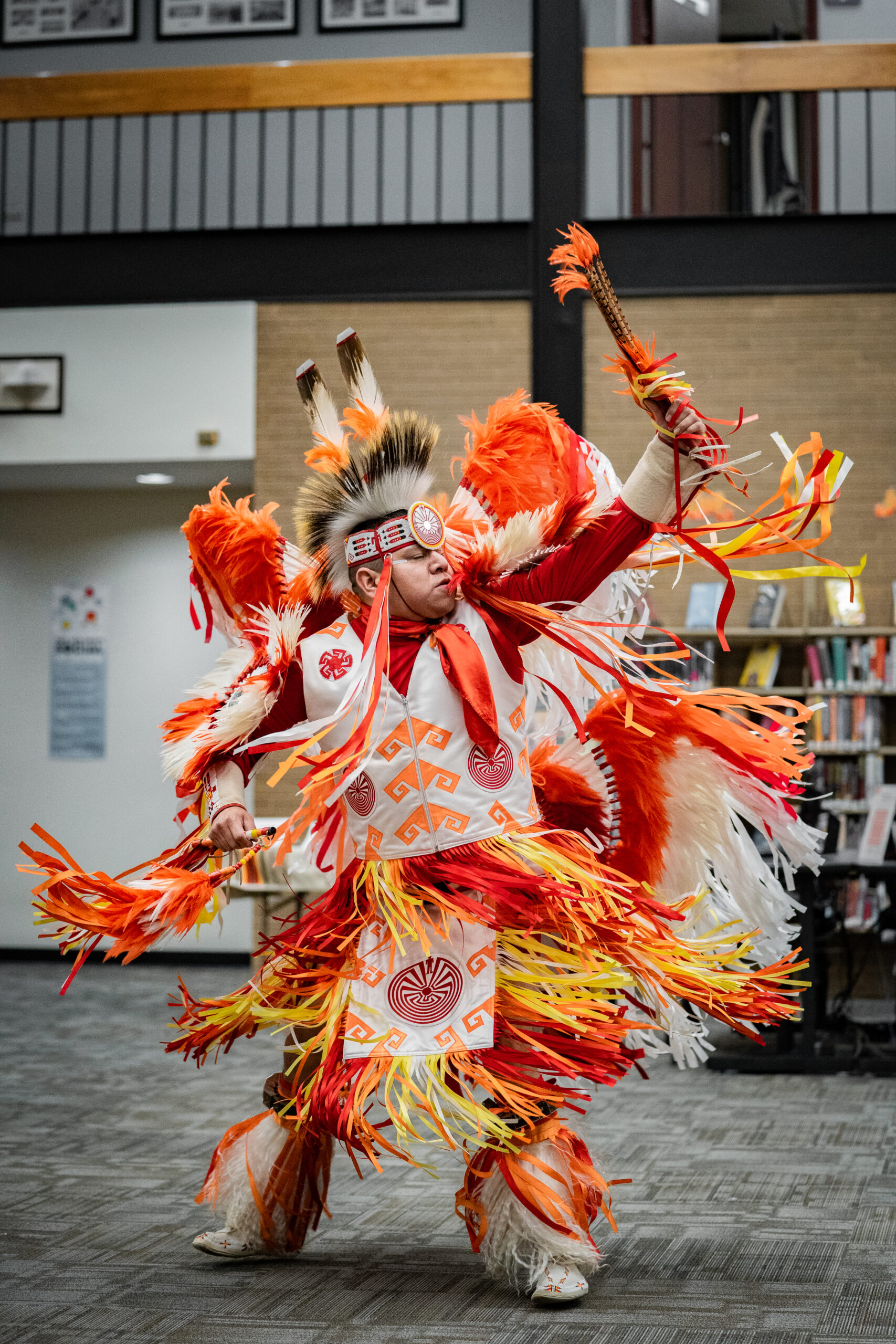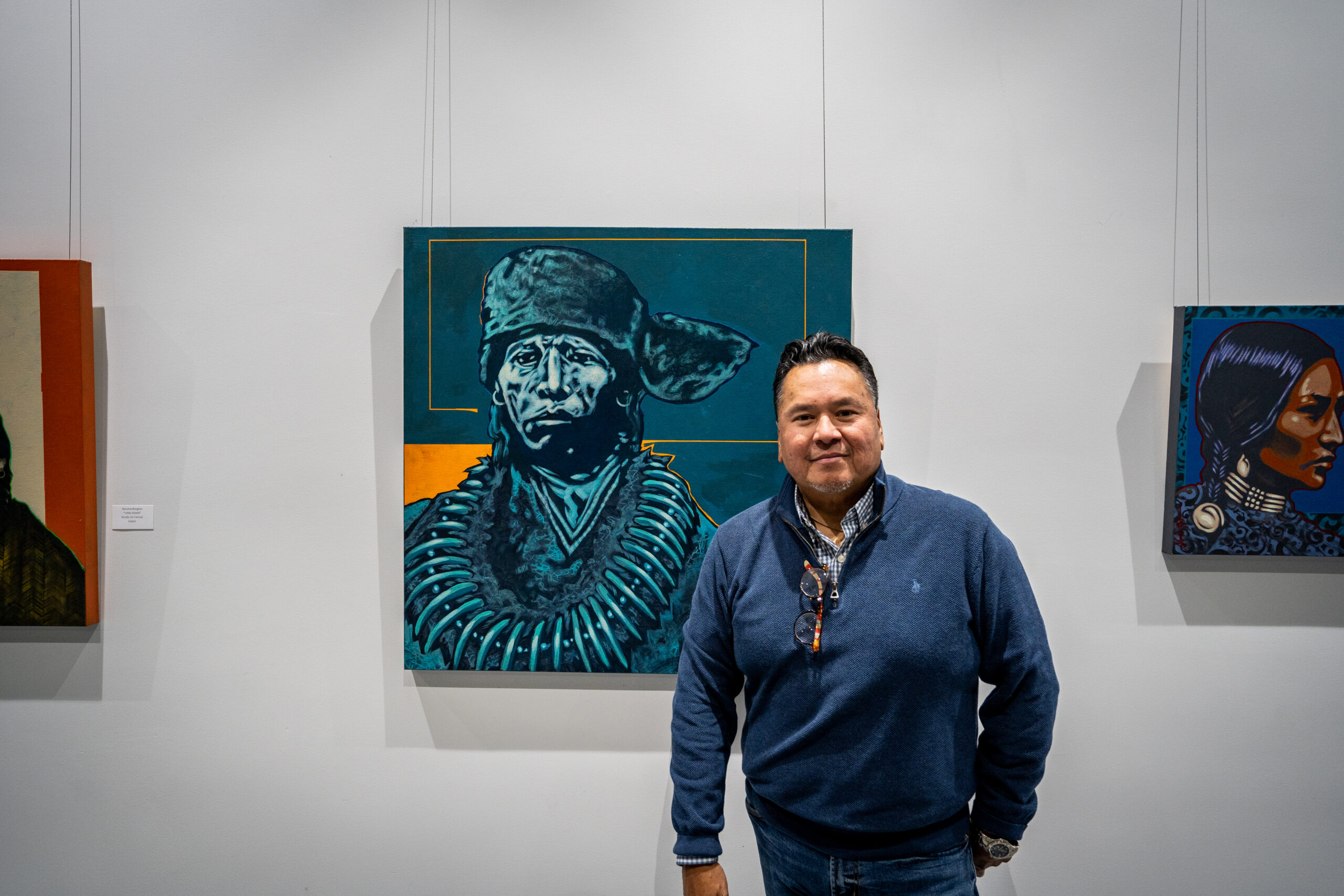DC3 Celebrates Native American Heritage Month
Published November 29, 2022
November is Native American Heritage Month. And to help celebrate the occasion, the Dodge City Community College (DC3) Library organized a month-long series of events, which included native dance and art exhibitions, amongst other activities.
“We were very excited to offer indigenous cultural perspectives through the lenses of art, literature, and dance,” DC3 Library Director Holly Mercer, said.
The month’s activities began with the November book selection for the DC3 Library’s ongoing Read and CONQuer program, which was “Conflict Resolution for Holy Beings: Poems” by Native American poet Joy Harjo.
According to Dr. Jane Holwerda, DC3 Vice President of Academic Affairs, who chose the November selection, the poetry collected in Harjo’s book speaks to the struggle for authentic identity in a consumer culture and defines that struggle as necessary and meaningful.
“Harjo’s poetry is accessible to readers of all ages and backgrounds, but this collection especially resonates with readers who look to past and future for meaning,” Holwerda said. “Harjo is adept in juxtaposing details of contemporary life—for example, being distracted by social media—with indigenous values.”
In addition to the Native American tie-in with the Read and CONQuer program, the DC3 Library showed the movie “Thunderheart” on Nov. 4. And then on Nov. 10, the Library hosted the November Science Café, which featured Stephanie Fisher, Director of the El Quartelejo Museum, in Scott City, Kan., who gave a presentation titled “The Story of a Pueblo in Kansas.”
Wichita War Dancer
Although the weather was cold on the evening of Nov. 17, Greg Victors, better known as the Wichita War Dancer, provided a lively, interactive exhibition of native war dancing. Through the course of his presentation, Victors explained the various meanings of the dances—and of the regalia he wears—to a group of about 35 people in the DC3 Library.

Greg Victors, the Wichita War Dancer, performs a traditional dance during his presentation in the DC3 Library on Nov. 17. [Photo by Lakin Scheck]
Victors, who is a world champion war dancer from Wichita, Kan., is part of the Tohono O’Odham and Ponca Nations. And through his dancing, he said he seeks to not only share about his people’s past and traditions, but he also strives to highlight the contributions they are making to the world today.
“When we come to this time of year, we’re always looking to learn about the past,” he said. “But we’re doing a lot of great things. We’ve taken a lot of great innovative steps into the future and are contributing to this society when it comes to water, enterprise, business, gaming and even politics.”
Nocona Burgess
On the evening of Nov. 28, Native American painter Nocona Burgess, gave a guest artist lecture in the DC3 Little Theatre. To a group of nearly 40 people, Burgess explained his acrylic painting techniques and how he chooses the subjects of his various projects.
“Some interesting facts about Nocona Burgess are that he is Comanche, originally from Oklahoma, and he now resides in Santa Fe, N.M.,” Mercer said. “His award-winning work is widely acknowledged and included in the permanent collections of the Smithsonian and other museums throughout the Americas and Europe.”
During his lecture, Burgess explained that instead of painting on a white surface, he prefers to paint on a black one. This technique, which he describes as “painting outward,” is something he picked up in art school in the 1990s.
“I always kind of tell people that I feel like when you paint or draw on a white surface, it’s like you’re carving into a stone getting deeper and darker,” he said. “Whereas when you paint on a black surface, it’s like building in clay.”
Devlin Goldworm, DC3 Professor of Art, said the way Burgess works with acrylic paint is “very innovative,” because he works the opposite way of most acrylic and oil painters.
“Starting with a black canvas, Nocona brings the subject out of the canvas with first medium, then light tones, building highlights and creating distinctive focal points,” Goldworm said. “Most painters work from a white canvas and build depth through dark tones developing space. In working this way, Nocona is able to create vibrant contrasts through subtle layering that make his subjects seem to glow and truly come to life.”

Nocona Burgess, a Native American artist, poses beside one of his paintings, “Movee Pawnee,” which was inspired by a Native American actor he noticed while watching the 2014 film “The Homesman.” [Photo by Lakin Scheck]
Regarding the subjects of his paintings, Burgess said he likes to accurately tell their stories—whether they are historical figures from the 1880s or modern-day people.
“I’m trying to tell people who these people are,” he said, referring to one of his paintings displayed in the Little Theatre Art Gallery. “I’m just trying to educate people to kind of learn something outside of what they would normally know, right? Because I feel like the more we know about each other, the more walls come down.”
By Lance Ziesch
DC3 Assistant Director of Marketing and Community Relations